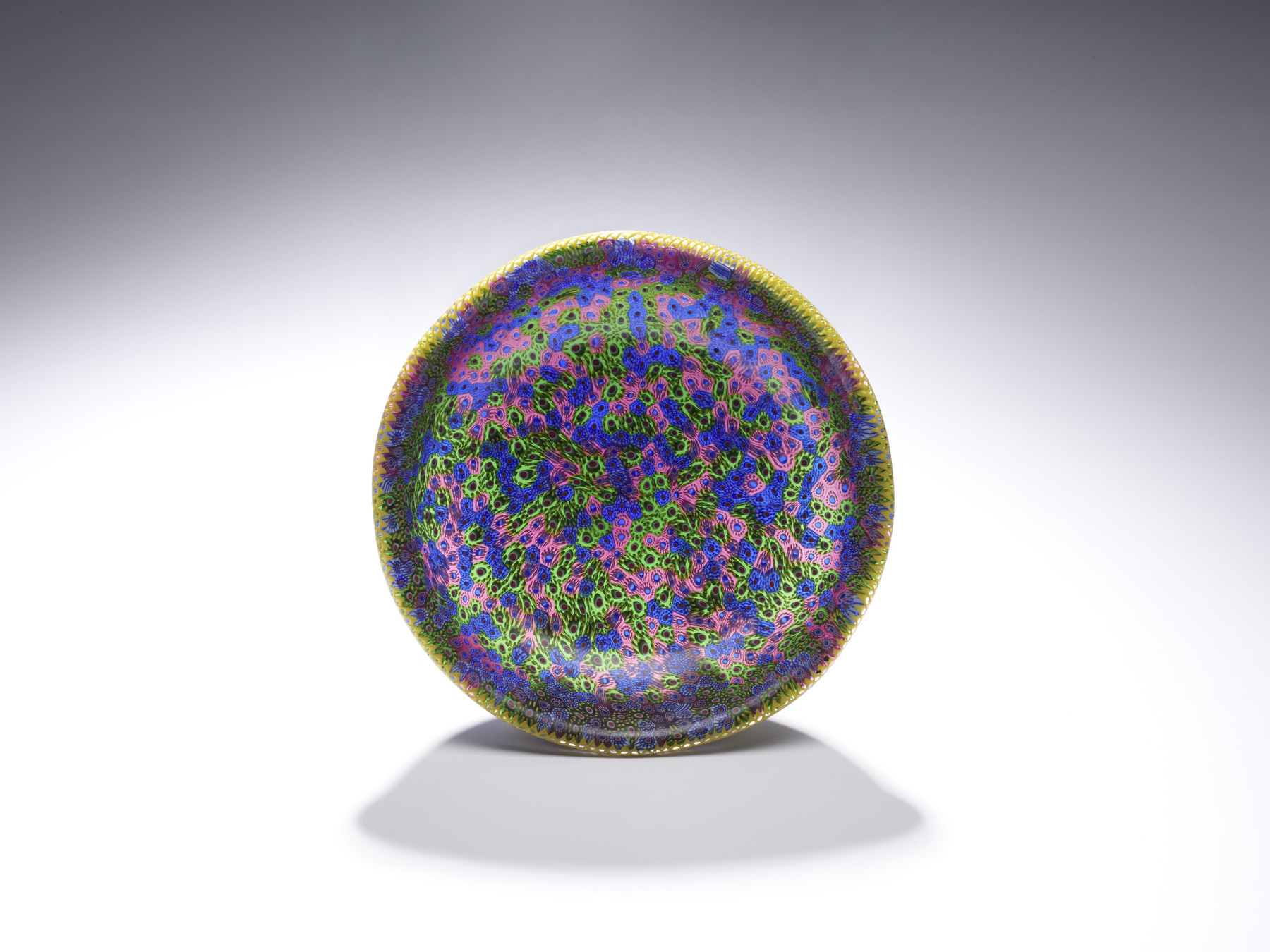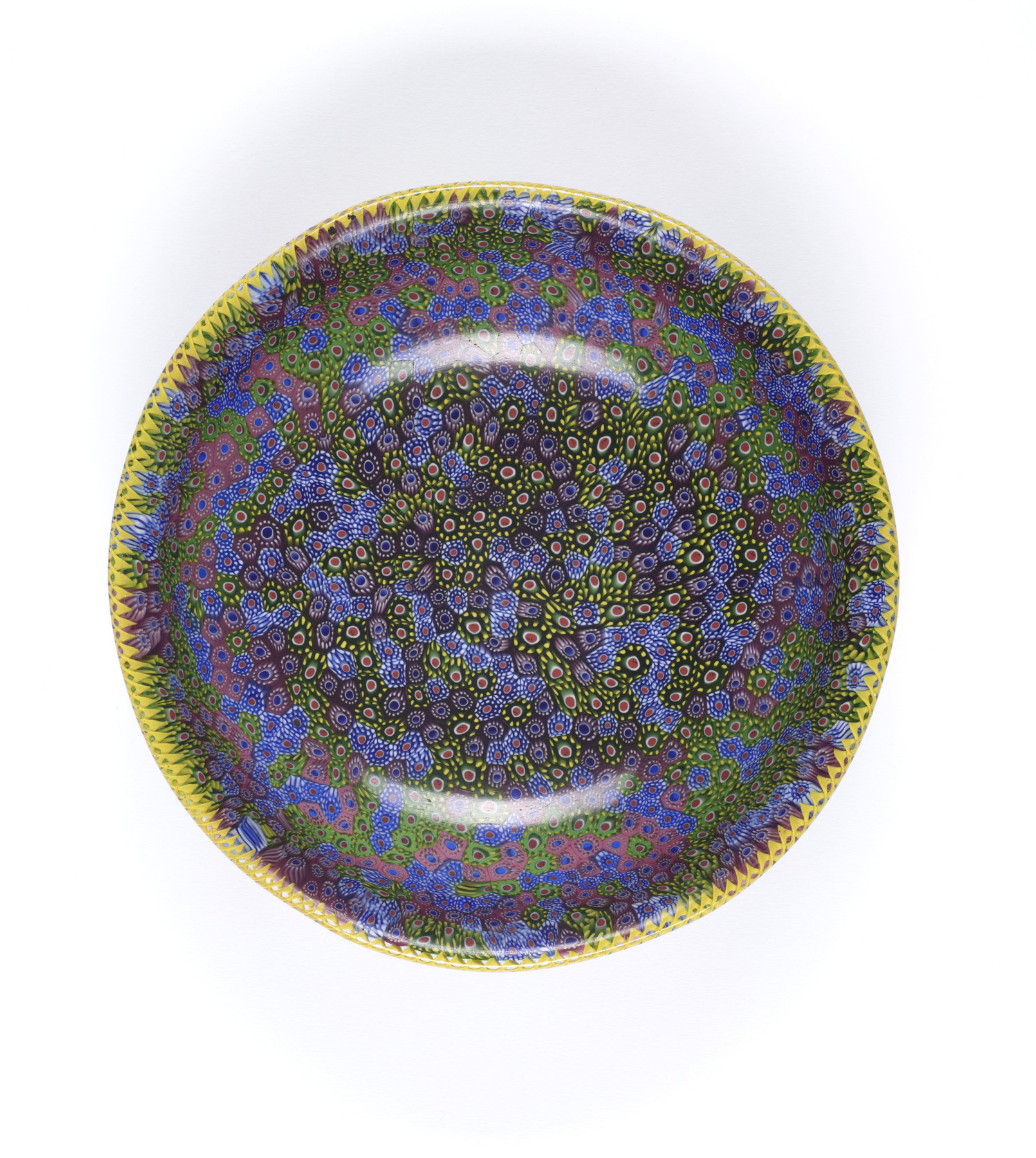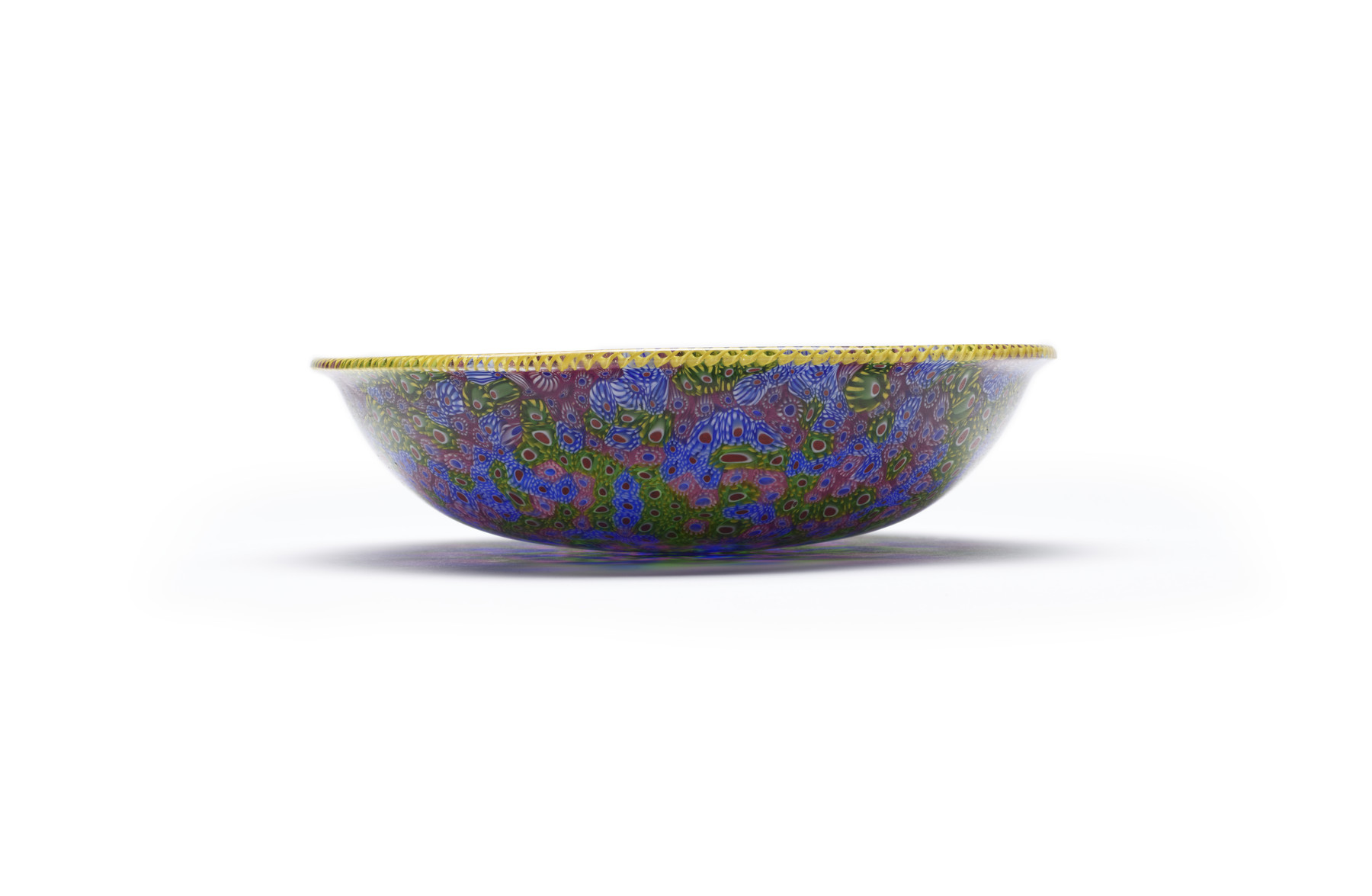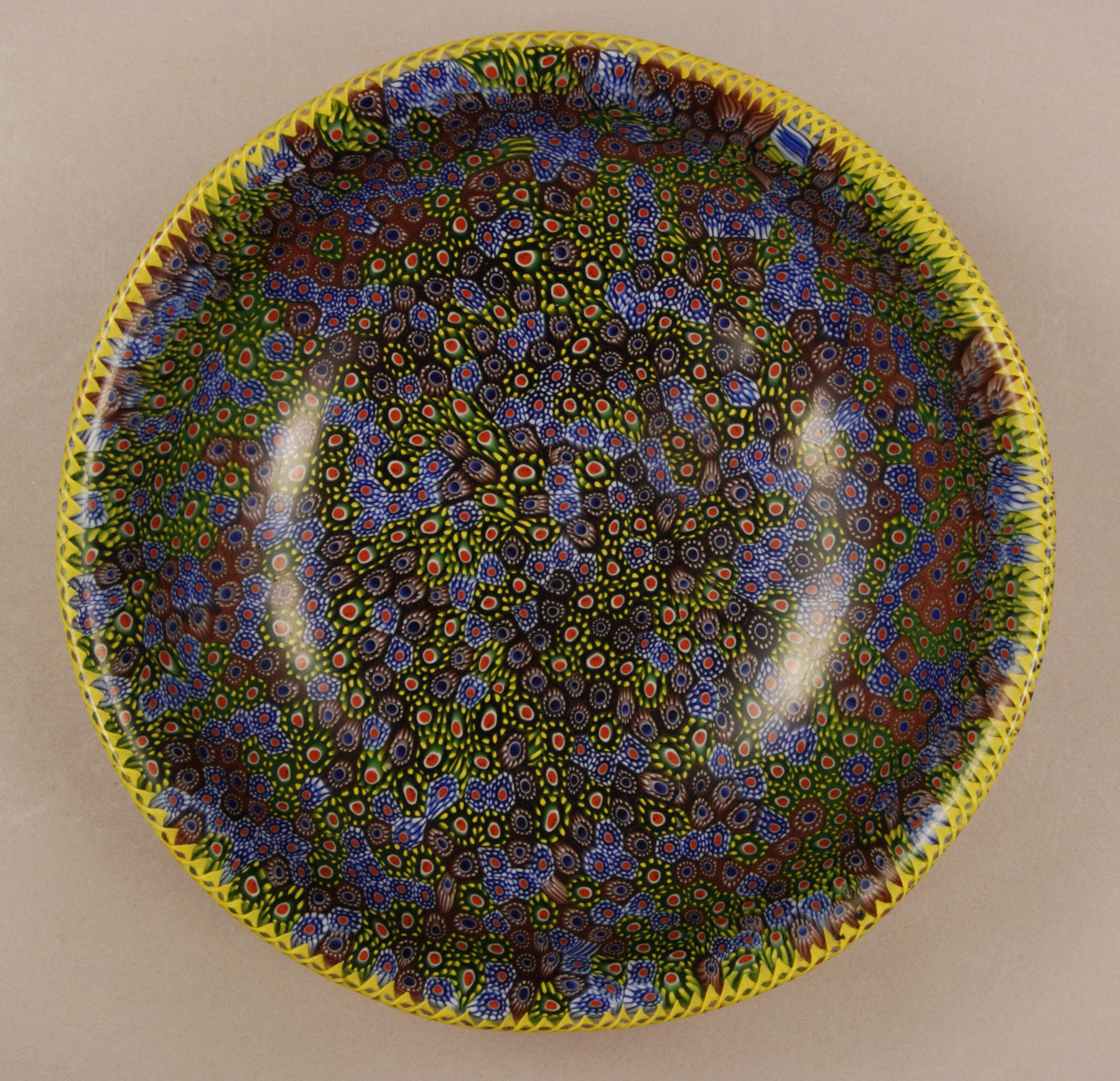Mosaic Bowl
Vincenzo Moretti, a glassmaker for Salviati, successfully produced glass bowls in the late 1870s using the ancient technique of mosaic glass. Makers of mosaic glass cut thin slices of from long, thin rods known as canes. The slices were placed side by side on a marble slab and heated in a furnace until they fused together. The soft flat disk of fused glass was then placed over a bowl-shaped form and heated until it slumped into the desired shape.
Provenance
Provenance (from the French provenir, 'to come from/forth') is the chronology of the ownership, custody, or location of a historical object. Learn more about provenance at the Walters.
Henry Walters, Baltimore [date and mode of acquisition unknown]; Walters Art Museum, 1931, by bequest.
Exhibitions
| 2021-2023 | Sargent, Whistler, and Venetian Glass: American Artists and the Magic of Murano. Smithsonian American Art Museum, Washington; Amon Carter Museum, Fort Worth; Mystic Seaport Museum, Mystic. |
| 2007-2008 | Salviati and the Antique: Ancient Inspiration for Modern Glassmaking. The Walters Art Museum, Baltimore. |
Geographies
Italy, Venice (Place of Origin)
Measurements
Diam: 6 13/16 × H: 1 7/8 in. (17.3 × 4.76 cm)
Credit Line
Acquired by Henry Walters
Location in Museum
Not on view
Accession Number
In libraries, galleries, museums, and archives, an accession number is a unique identifier assigned to each object in the collection.
In libraries, galleries, museums, and archives, an accession number is a unique identifier assigned to each object in the collection.
47.298










